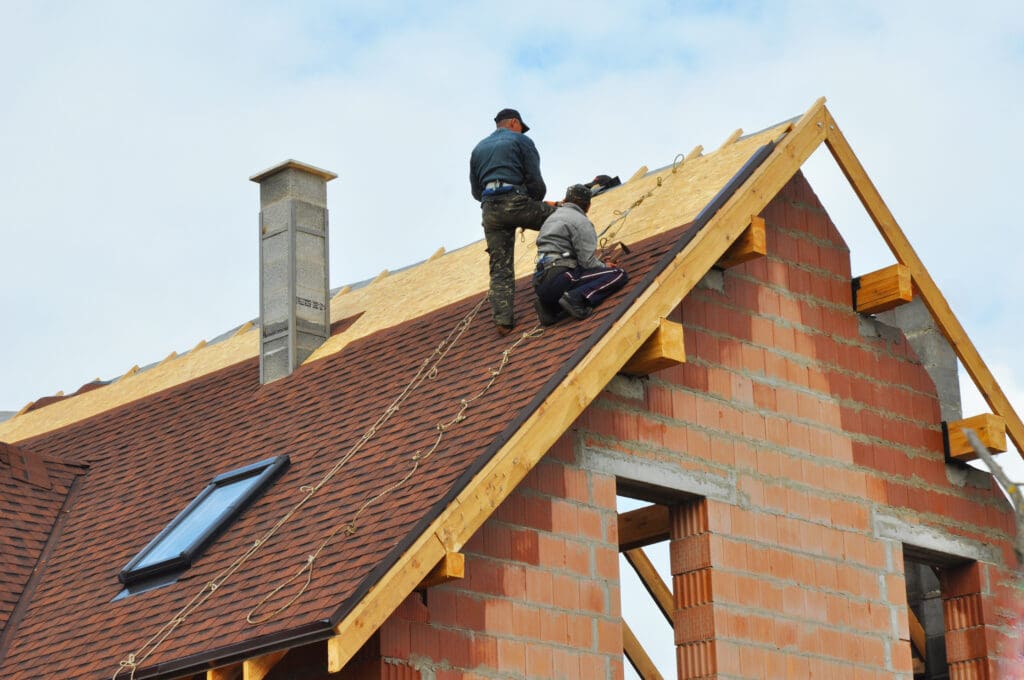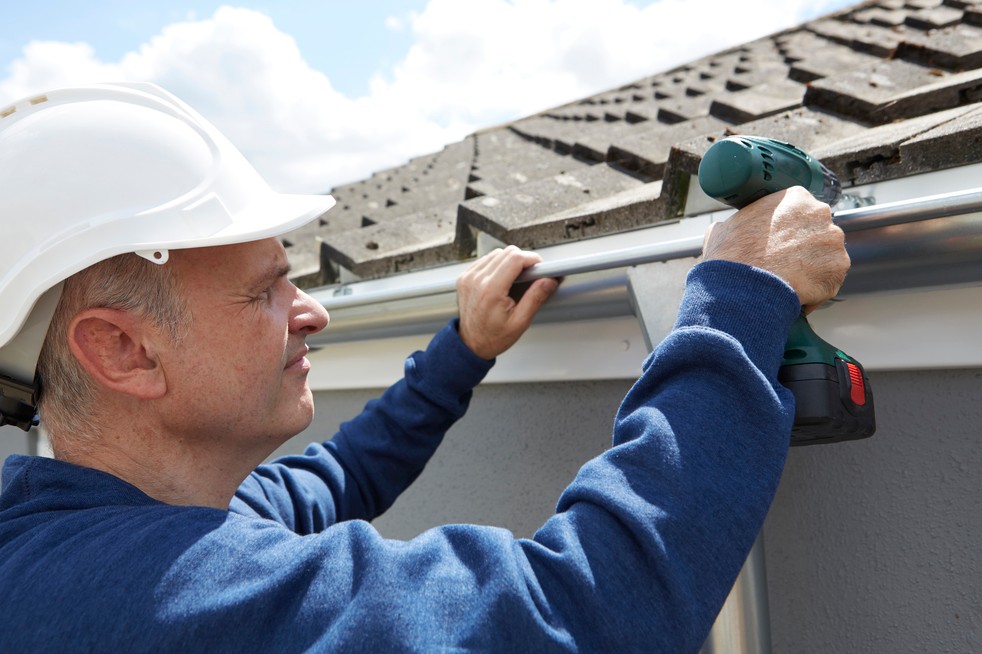
Published on January 21, 2025
Why Your Roof Structure Matters
The roof of your home is your first line of defense against the elements. It shields your family and belongings from rain, wind, and debris while contributing to your home’s comfort and energy efficiency. But while most people think about the outer layer of shingles or metal roofs, the real strength of your roof lies in its structure.
The roof structure is what holds everything in place. It supports the roofing materials, distributes weight evenly, and ensures your home stays safe and sound. When there’s damage to your roof—like missing shingles or leaks—it can lead to serious problems with the roof structure itself.
Over time, issues like water damage, poor roof maintenance, or storms can weaken the structure, putting your home at risk. Addressing these problems early with roof structure repair can save you from costly repairs and extend the life of your roof.
 Understanding the Makeup of a Roof Structure
Understanding the Makeup of a Roof Structure
A roof’s structure is more than just a few beams holding everything together. It’s made up of carefully designed components that work together to provide stability and strength. Here’s a simple breakdown of the main parts of a roof structure:
Rafters
Rafters are the beams that form the “bones” of your roof. They run from the top of the roof (the ridge) to the walls of your home. Think of them as the backbone that supports the weight of your roof and helps it maintain its shape. Rafters are typically made of wood and are placed in a sloped pattern, which allows water and debris to slide off the roof.
If rafters become damaged or warped—often due to moisture or aging—it can compromise the entire roof system. Repairing or replacing damaged rafters is essential to maintaining the strength and life of your roof.
Trusses
Trusses are pre-engineered wooden frameworks that provide extra support for the roof. They’re designed to distribute weight evenly and prevent sagging. Unlike rafters, which are built on-site, trusses are typically prefabricated and come in a triangular shape for added stability.
Because trusses hold so much of the roof’s weight, any issues with them—such as cracks, splits, or moisture damage—require immediate attention. A licensed, bonded, and insured roofing contractor will have the expertise to repair or replace trusses properly, ensuring your roof meets building codes.
Decking
Decking is the flat surface that sits on top of the trusses or rafters and acts as the base for your roofing materials like shingles or metal panels. Usually made of plywood or oriented strand board (OSB), decking provides a solid foundation for the outer layer of the roof. Over time, water damage can cause decking to warp, rot, or lose its strength.
If left unchecked, this can lead to leaks, sagging, or even structural collapse. Regular roof inspections and prompt repairs are crucial to maintaining the decking and preventing further problems.
What Happens When the Roof Structure Gets Wet?
Water is one of the biggest threats to a roof structure. When moisture finds its way past the outer roofing layer, it can seep into the rafters, trusses, and decking, causing long-term damage.
How Water Gets In
Water can reach the roof structure in several ways:
- Leaks caused by damaged shingles or flashing.
- Poor drainage from clogged gutters that allow water to pool on the roof.
- Storm damage, such as cracks from hail or punctures from fallen branches.
- Aging or worn-out roofing materials that no longer repel water effectively.
What Water Damage Can Do
When water penetrates the roof structure, it can weaken the wood, leading to rot, warping, or cracks. Over time, this damage can spread, compromising the entire system. Mold or mildew can also develop, creating health risks for your family.
In severe cases, a weakened roof structure can lead to sagging, leaks, or even collapse. Addressing these issues promptly with roof repair services is critical to protecting your home.
How Roof Structure Repairs Are Performed
Fixing a damaged roof structure involves restoring its strength and ensuring it meets current building codes. This process requires the expertise of a professional roof contractor with experience in roof structure repair.
Step 1: Roof Inspection
The repair process begins with a thorough roof inspection to identify the extent of the damage. Contractors look for weakened rafters, cracked trusses, or rotting decking.
Step 2: Removing Damaged Sections
Any damaged wood is carefully removed to prevent further weakening. This includes replacing rotted decking, cracked trusses, or warped rafters.
Step 3: Rebuilding and Reinforcing
New materials are installed to bring the roof structure back to its original strength—or better. This may involve using modern, stronger materials or adding reinforcements for extra stability.
Step 4: Protecting Against Future Damage
Once the repairs are complete, contractors ensure the structure is properly sealed to prevent water from getting in again. This includes checking the roofing materials, flashing, and drainage systems to keep everything watertight.
By hiring experienced, licensed, bonded, and insured roofing professionals, you can trust that your roof structure will be repaired correctly and safely.
Frequently Asked Questions About Roof Structure Repair
What is a roof structure?
The roof structure is the framework that supports your roof. It includes components like rafters, trusses, and decking, which work together to hold the roof in place and distribute its weight.
How can I tell if my roof structure is damaged?
Signs of roof structure damage include sagging, uneven rooflines, leaks, or visible mold or rot. A professional roof inspection can identify hidden issues before they become major problems.
What causes roof structure damage?
Roof structure damage is often caused by water damage, poor roof maintenance, or severe weather. Over time, aging materials can also weaken the structure.
Can roof structure repairs extend the life of my roof?
Yes! Prompt repairs can restore the strength of your roof and extend the condition of your roof, saving you from needing a full roof replacement.
Why is water such a big problem for roof structures?
Water can cause wood to rot, warp, or crack, weakening the entire system. It can also lead to mold or mildew, which poses health risks and further damages the structure.
Are metal roofs less likely to cause structural issues?
Metal roofs are lightweight and highly durable, which means they’re less likely to lead to structural problems compared to heavier materials like tile or slate. But if they have a leak or were improperly installed, you’ll still have structure issues.
Why should I hire a licensed, bonded, and insured contractor?
Hiring a licensed, bonded, and insured contractor ensures the work is done correctly, safely, and up to code. It also protects you financially in case of any unexpected issues.
Conclusion: Protect Your Home with Professional Roof Structure Repair
Your roof structure is the backbone of your home’s protection. When it’s damaged, your entire home is at risk. Prompt roofing services not only restore the strength of your roof but also help prevent future problems and extend its lifespan.
At Warner Roofing & Construction, our team of skilled professionals provides expert roof repair services in Vancouver, WA–including emergency roof repair. Whether you need repairs for water damage, storm damage, or aging materials for any type of roof, we’re here to help. Contact us today to schedule a roof inspection and protect your home for years to come.